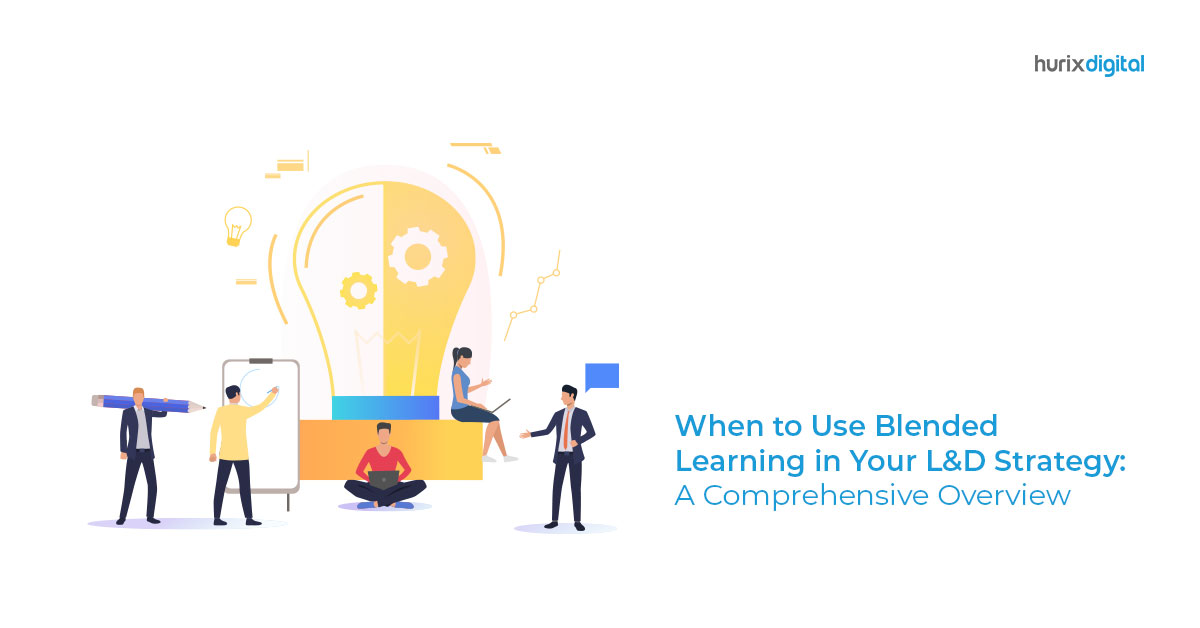
How to Implement Highly Engaging Blended Learning for Education?
Blended learning has quite literally become the talk of the town. Every student, teacher, and educational institution is striving to include this form of learning in the education process. Be it primary/secondary schools, degree/diploma colleges, or public/private universities – blended learning with an iota of both virtual and traditional ways has crafted its way into the teaching approaches of many institutions.
However, when it comes to implementing blended learning in higher education, a lot of institutions find it arduous to break away from tradition and embed the tools & techniques of digital technology into their coursework. As a result, despite their undiluted potential, their learning outcomes remain subdued and repressed.
Also Read: Advantages of Blended Learning over Traditional eLearning Methods
1. Pick a model
When implementing blended learning in higher education, you must start off in such a way that the needs and requirements of both your educators and learners are adequately met. In other words, you must introduce new technology within the confines of the traditional teaching space in a manner that is overly cautious, meticulous, and diligent.
This is why it makes practical sense to choose a path of least resistance and maximum engagement from the following models:
- Lab rotation – Carefully include ‘lab time’ into the students’ regular schedule wherein they can have a specific amount of time designated, especially for learning in a computerized lab.
- Station rotation – If a class lasts for one hour, divide the time into three sessions of 20 minutes each. In one of these stations, including online instruction, either individually or as a group.
- Flipped classroom – As the name suggests, the flipped classroom model works on the principle of flipping the mode of instruction. Through online coursework, students are first introduced to new concepts at home. Once they understand the basics, these concepts are then discussed and practised in class.
- Flex learning – While being in the classroom environment, flex learning introduces students to working with their teachers on digital courses. Students can control the pace of their learning while obtaining face-to-face support from their mentors.
Depending on which model of blended learning you follow, your faculty members’ role, physical infrastructure, cost requirements, and instruction delivery will change. Nonetheless, make sure that you choose a model that specifically suits the needs of your educational institution as a whole.
2. Use multimedia tools
In blended learning, the kind of multimedia tool you choose to impart lessons ends up having a huge impact on what the students take away from the class. While one-to-one lectures can give them the leverage of familiarity and comfort bred in a traditional environment, the use of multimedia tools can grant them the ultimate power of comprehension.
For this purpose, the multimedia tools that higher education institutions can easily deploy are:
- Gamified learning
- Simulation
- Audio/Video insertion
- Branching scenarios
- Case studies
- Animation
- Virtual/Augmented reality
- Interactive illustrations
You can also deploy smartphones in classrooms to strengthen the students’ understanding and engagement. Doing so would empower them to learn at a pace, time, and location of their own convenience and choice.
Watch the Video below for an Overview of Blended Learning Systems:
3. Build personalized pathways
Every student’s style & approach to learning is different. While some prefer learning via textual material only, others prefer being taught in a highly interactive environment. And this is precisely the greatest benefit that blended learning in higher education has to offer – it can build unique, targeted & personalized learning pathways.
Based on what every student specifically needs, blended learning can be moulded into lessons that are based on customized resources. Teachers can use this opportunity to find out how much the students have already learned and how far they need to go to progress. In fact, the process of learning can continue even outside the classroom. Students can access a multitude of information, content, games, quizzes, activities, and books whenever they want and wherever they want.
In the long run, this can encourage them to learn continuously and favourably, without hampering their understanding, context, or schedule.
Also Read: 7 Steps to Designing Effective Blended Learning Courses
4. Assign projects online
In the beginning, you might find the implementation of blended learning in higher education a little difficult. This is because many teachers and students, who are set in their conventional ways, would find it difficult to break out of their comfort zones. However, when you start delineating a blended policy, things will eventually fall into place.
You can take a step forward in this direction by assigning individual or group projects online. In this regard, you can –
- Provide a set of videos to watch before your next face-to-face session
- Ask students to fill out an online questionnaire and compile its results for the class
- Engage them via worksheets, which are both downloadable and shareable
- Replace regular sessions with once-a-week online seminars for topic discussion
- Offer digital assessments and instant feedback for any projects that you may have assigned
Incorporating these methods into your schedule will not just enable you to ease your students into the world of blended learning, but it would also provide you with the exclusive opportunity to improve their attention span, enhance their subject grasp and thus upgrade your learning outcomes.
Also Read: 7 Ways to Get the Best Out of Blended Learning Solutions As times change, the shift from one-on-one lectures to digitally powered tools is likely to become more pronounced in a classroom environment. More and more schools, colleges, and higher education institutions are expected to make the transition towards blended learning to induce teaching flexibility, enhance learning effectiveness, create differentiated strategies, and thereby increase student engagement. Although this change might initially seem to be quite overwhelming for many, it will eventually create a learning space that values pace, access & diversity over rote memorization, convention, and uniformity.
So, what are you waiting for? Make learning fun and exciting for your students by implementing blended learning in higher education now!
Suggested Reads:
- Is Blended Learning the Right Approach for Your Enterprise?
- How to Use Blended Learning for Corporate Training
- 10 Best Practices in Blended Learning
- Switch to Blended Learning for Better Learning Outcomes
Need to know more about our Products & Services? Drop us a note at marketing@hurix.com.









